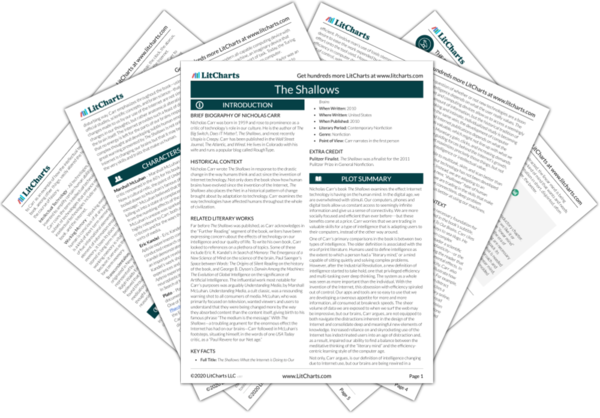The Internet, being a machine for multi-tasking, has made us excellent multi-taskers. Carr writes this to show that he does not take issue with the argument that the Internet is enhancing certain mental abilities. What he does take issue with is Net users failing to ask whether we
should be adapting our mental abilities to the functionality of a machine. Here we return to the question of what kind of intelligence the Net is fostering. Considering how the Net reshapes things in its own image, it makes sense that the intelligence of the Net user is an intelligence that serves the Net.
